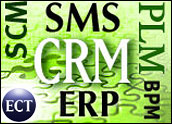
If Willy Loman carried a BlackBerry instead of a briefcase, could his demise have been prevented? Maybe not, but you’d be hard pressed to find many traveling salespeople today who don’t rely on their BlackBerry, PDA, cell phone or laptop to support their daily activities. So why does software directed at salespeople completely ignore their day-to-day selling lives?
The software industry has done an admirable job of automating and streamlining processes for accounting, finance, human resources, customer service and shipping. Meanwhile, one of the most important functions within the corporation — sales — has been overlooked.
Sure, there are dozens of CRM (customer relationship management) and SFA (sales force automation) solutions claiming to improve the lives of individual salespeople. But a look under the covers shows that they are focused on contact management, reporting and forecasting — activities much more important to executive management than everyday salespeople. In fact, these solutions tend to add more work for salespeople and keep them from doing the most important part of their job — actually selling.
Down With Rigid Routines
As a salesperson of 20 years, I can personally share my disdain for these systems. However, as a former sales manager, director and vice president of sales, I can also give them credit for the value they provide.
Unfortunately, what’s good for the sales manager isn’t always good for the sales rep. If salespeople track data, businesses can gain insight into customer trends and behaviors and shape revenue forecasts. Still, salespeople tend to balk at adopting solutions that divert them from selling with hours of data entry and spreadsheets.
It is this human factor that ultimately drove early CRM/SFA solutions off course. Salespeople watched in frustration as rigid data entry routines were imposed on them and number crunching became the norm. Many simply ignored them or waited until the end of the quarter to update data. It is no surprise that these traditional selling solutions, which ironically force salespeople to report on their progress rather than engage prospects, continue to suffer from low user adoption rates.
Eleven percent of CRM implementations fail to go live, reports analyst Rob Bois in a recent note from AMR Research. He speculates that the actual failure rate could be two or three times higher and points to two reasons:
- Salespeople are slow to adopt software tools and technologies that don’t add immediate value to their ability to sell.
- Applications are too often deployed as glorified contact and account management systems specified and selected by sales management or IT — not by the salespeople who will actually be using the system.
“The key to SFA adoption is a combination of choosing the right tool, aligning it to the right business processes, taking a multifront approach to selling the project to users, and closely monitoring adoption,” Bois continues.
“If the tools are easy to use, mirror the actual processes sales people employ, and give the rep value back in the form of reduced administrative work or better customer insights,” he adds, “long-term value can be derived.”
Adapt to Existing Workstyles
Today, CRM and SFA solutions appear to be going deeper into the enterprise, offering to support the entire business infrastructure, and getting further and further away from the salesperson they originally claimed to help. It’s time to usher in a new breed of selling solutions that gets back to the salesperson. If any software geared for the salesperson is going to stick, it must perform the following functions:
- Eliminate Data Entry. Traditional CRM has taught us that salespeople are most effective when they are free to engage prospects. Data entry is a reality, no matter what the solution, but it must never impede selling. Selling solutions should keep salespeople in “selling mode” rather than “data entry mode.” Solutions designed to provide real support to salespeople should capture data dynamically behind the scenes to automate the process or come with services that can offload this mundane task from their daily lives.
- Increase High-Touch Selling. Selling solutions must deliver highly interactive tools that help foster a personal relationship with the buyer, without overloading the prospect with constant phone and e-mail follow-up. For example, enabling the salesperson to track buyer interests and deliver the right marketing content at the right time is far more productive and effective than the hassle of ongoing follow-up.
- Provide Step-by-Step Guidance During the Selling Process. Every salesperson wants to know what works — what seals the deal. They should not have to depend on one-time sales training or orientation to understand the successful selling practices in a company. These proven selling activities and processes should be perpetually visible and built into their sales software so that the guidance they seek is always a click away.
- Maximize Productivity and Profit. According to an old sales axiom, “20 percent of the sales force generates 80 percent of the leads.” Imagine the difference if a company could boost the effectiveness of the salespeople who are inexperienced or ineffective. Selling solutions must engage and guide these salespeople to have better conversations with their prospects, increasing customer satisfaction and profits.
For those seeking to maximize productivity across an entire sales team, the key is to select a solution designed not for management but for the individual salesperson. This tool must adapt to the existing workstyles of salespeople, bringing them real value and help in closing deals, so that just as easily as they reach for their BlackBerry or cell phone to engage buyers and close deals, salespeople will turn toward their software to help them get the job done.
Razi Imam, a 20-year sales veteran, is founder and CEO of Pittsburgh-basedLandslide Technologies, a provider of sales workstyle management solutions.













































